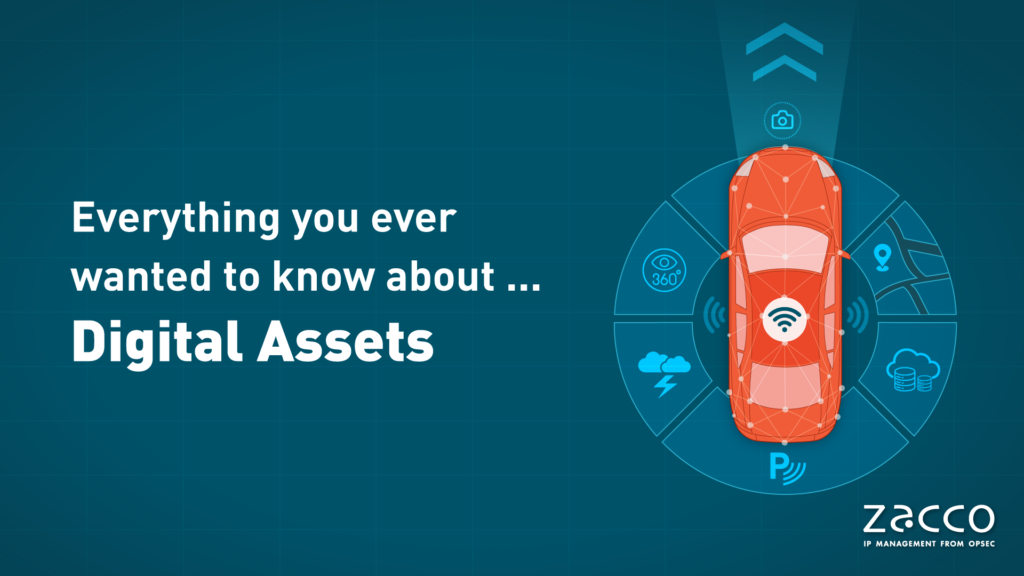Everything you ever wanted to know about … Digital Assets

How is digital shaping intangible assets? What role is it playing in the development and enforcement of IP rights? How does data security and information security fit into the picture? Where are business operations and IP/brand activities creating new insights?
Welcome to the third in our series of Asset Q&As: Everything you ever wanted to know about Digital Assets. This topic will explore the role that digital is playing in the creation, monetisation, and protection of value in intellectual property assets and brands, both online and offline. We will consider how digital now contributes so significantly to intangible value and why Digital Assets touch so many other aspects of IP and brand identity.
Organisations typically understand the inherent value of their information and data and the need to protect them. But knowing how to manage these as intellectual property (IP) and brand assets may be less obvious. To explore the evolution and future of Digital Assets, Selva Selvaratnam, Chief Executive Officer of OpSec Group, and Najaf Gillani, Chief Technology Officer, connected with Patrick Thorén and Tobias Harhoff, who head up the Digital Trust and Digital Brand activities for Zacco IP Solutions. Information and data are now at the heart of IP portfolios and brand activities, and unlocking and protecting this value is central to the OpSec approach.
What are Digital Assets?
Information in the form of business plans, sales data, product developments, and customer details, is familiar to most. So too is the need to protect these assets through effective data security and information privacy. But what makes them a Digital Asset? In the field of intellectual property, this term is often used for assets that cannot be protected by traditional IP rights, even if they may be supported or underpinned by them. In today’s disparate digital landscape, this could mean corporate domain names and websites, presence in an online marketplace, or the consumer trust and brand reputation associated with the secure storage of customer information.
“When discussing Digital Assets, we ask the same essential question of any asset area: ‘What are the implications if your IP or asset is misused?’”
07:50 | Tobias Harhoff – Director of Digital Brands, Zacco
The form of these digital assets varies, from data and software to platforms. But they all represent something that holds value and may be difficult or impossible to protect using traditional measures. What separates them from other intangible assets is the fact that they almost always manifest as lines of code. As such, they exist in the digital realm but are unlikely to have a physical presence – at least not beyond the server that holds them.
How are Digital Assets evolving and what changes have we seen?
Organisations generate, transform, and store a lot of data and information, much of which drives decisions. But it’s only in recent years that processing power has progressed to a point where enormous amounts of data can be turned into something actionable and valuable. ‘Big Data’ analysis and a level of connectivity that allows instant access have reshaped how organisations use information. This offers powerful opportunities, such as actionable insights into consumers, market positions, and IP infringements. But it has also resulted in greater risk to brands and reputations because it can be, and often has been, met with a failure to store and secure data effectively.
“Digitalisation has become a pervasive force that touches almost every other aspect of intellectual property and brand identity.”
02:46 | Patrick Thorén – Director of Digital Trust, Zacco
Supply chain and product traceability solutions offer a good example of how data access and insight have evolved to reshape multiple aspects of business operations. Data about product origins and event histories can be used to demonstrate provenance, determine whether products end up in the intended markets, or back up sustainability claims. Similarly, customer profile and behavioural data that is collected via online, in-store, and product-based interactions can enable targeted promotions, build brand loyalty, and map potential aftersales opportunities.
What data should I be looking for and how do I recognise where I may be exposed?
This depends on the markets you operate in, the data you have access to, and what you hope to achieve. Data is likely to hold value if there is a cost in its collection and transformation, it is difficult to protect via traditional measures, or its loss brings risk of financial or reputational damage. Most companies have an online presence to varying degrees. So web domains and accounts in marketplaces, social media, and even parts of the metaverse are often a good place to start. However, simply creating online accounts or registering a domain name is no longer enough. For example, domain management underpins email authentication and multiple security protocols.
“It can sometimes be hard for (companies) to recognise where they might be exposed, or from where the threats might emerge.”
13:29 | Selva Selvaratnam – Chief Executive Officer, OpSec Group
For domains, cybersquatting or ‘typo’ domains, such as mistyped or similar domain registrations, expose brands to lost sales, lower traffic to websites, and diminishing consumer trust. On social media platforms and online marketplaces, threats may emerge from resellers, influencers, or bad actors who erode consumer trust, steal data, and devalue brands. Just as with any other technological advance, the metaverse presents new risks as boundaries between physical and digital worlds become more blurred – particularly while this new frontier lacks regulation.
It sounds like I have some Digital Assets, so how can I start making use of them?
When data is repurposed into information and insights, it opens up multiple new opportunities. An interesting example is the automotive industry, where data is generated on everything from engine and fuel management to braking systems, navigation, weather, and vehicle communication. On its own, this data may not be inherently valuable. But if collected and fed into training algorithms to inform or refine autonomous driving behaviours, it can improve navigation, awareness of surroundings, vehicle communications, and battery and fuel economy.
Insights come from data that is gathered from core business operations, or sometimes even for brand protection purposes. Sales data from an e-commerce site may start out being captured for financial purposes, but it can be repurposed to spot new opportunities, such as a better understanding of buying habits or emerging markets. But analytics that derive from brand or content protection activities, such as online anti-piracy, can also offer wider insights. This could span consumer or audience behaviours, emerging markets, or untapped demand. Data that is generated by digital product interactions, such as authentication measures, could inform engagement marketing.
“While various forms of data are used as a basis for protecting IP and brands, that same data can be repurposed into information and insights that can guide commercial and other business decisions.”
09:53 | Najaf Gillani – Chief Technology Officer, OpSec Group
How does an IP and brand protection business view the future of Digital Assets?
The combination of OpSec brand protection and Zacco IP management capabilities creates a compelling range of solutions and services around Digital Assets. As early adopters of technology and pioneers in digital IP and brand management, we have invested in expertise and platforms to help manage and protect the essential digital aspects of modern enterprises and innovation processes. We view this as an essential part of our approach.
“Given the nature of Digital Assets and how they are evolving, it’s a good time to be joining forces with one of the pioneers of brand protection.”
31:10 | Patrick Thorén – Director of Digital Trust, Zacco
From domain management and online brand protection to secure software development and cyber security, we help our clients and customers turn information and innovations into Digital Assets. Beyond this, we are seeing further opportunities in the data that is created while defending brands and IP rights. This offers the potential to provide valuable insights into wider business questions and objectives that, in some circumstances, may even go beyond what can be achieved from other corporate information alone. In short, a new form of Digital Asset.




Selva Selvaratnam
Chief Executive Officer, OpSec Group
Selva has overseen the evolution of OpSec into a comprehensive provider of intellectual property management and brand solutions, following a career in brand and identity security, and as a technology entrepreneur.
Najaf Gillani
Chief Technology Officer, OpSec Group
Najaf has over 20 years of experience leading global software engineering teams, working for eBay, Walmart, Macy’s, and Openwave, as well as starting up multiple businesses.
Patrick Thorén
Director of Digital Trust, Zacco
Patrick’s background in engineering and technical consultancy blends with a passion for all things technology. Responsible for developing Zacco’s digital and cybersecurity offering, he helps clients to protect some of their most valuable assets.
Tobias Harhoff
Director of Digital Brands, Zacco
Tobias is an expert in Digital Brand Protection having spent his career helping clients navigate the crossroads between digital identity, intellectual property and regulatory requirements, alongside assisting with Corporate Domain Management and online enforcement of IP rights.

